What to do if my Panasonic AW-UE150WP wireless remote control is not working?
- TteresawileySep 23, 2025
Replace the batteries in the remote control.
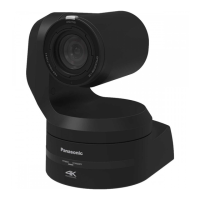
What to do if my Panasonic AW-UE150WP wireless remote control is not working?
Replace the batteries in the remote control.
What to do if the authentication screen appears repeatedly on my Panasonic Security Camera?
Close the web browser, and initiate access to the unit again.
Why do the screens displays take a while to appear on my Panasonic Security Camera?
If a proxy server has been set using the [proxy setting] of the web browser, it is recommended that a 'Don’t use proxy' address be selected as the unit’s IP address setting.
What to do if the subject is not brought into focus during zooming on Panasonic AW-UE150WP Security Camera?
If the subject is not brought into focus during zooming when the manual setting is used for the focus on your Panasonic Security Camera, adjust the focus at the Tele end first, where the focusing accuracy is higher, and then proceed with the zooming. Note that under some operating conditions, it may be hard to bring subjects into focus.
How to troubleshoot no power on Panasonic Security Camera?
If no power is supplied to the Panasonic Security Camera, make sure the AC cable of the external DC power supply is securely connected to the AC outlet and that the power plug of the external DC power supply is connected properly. Verify the LAN cable is securely connected to the LAN connector for IP control. Ensure the network cable for the PoE++ compatible power supply device and the unit are connected properly. Note that power may not be supplied if the total power limit is exceeded on power supply devices that allow connections to multiple PoE++ terminals. If the unit is connected to the controller, ensure it has been connected properly. Consider the power source when performing operations from a wireless remote control.
Why the tally lamps do not light on my Panasonic Security Camera?
If the Panasonic Security Camera tally lamps do not light, ensure that the [Tally] setting is not set to [Disable]. If it is, the unit's tally lamp will not light.
What to do if no pictures are displayed or the pictures are disturbed on Panasonic Security Camera?
If images are not displayed on your Panasonic Security Camera, ensure that the unit has been connected properly to the other connected devices. If the system is configured to switch the picture when the unit to be operated is selected, verify that the correct unit has been selected. Confirm that the image signal setting has been selected correctly and that external sync signals supported by the set video signal format are being input.
Why does Panasonic Security Camera turn in the opposite direction?
If the Panasonic Security Camera unit turns in the opposite direction to the one operated, check if the stand-alone (Desktop) installation setting has been selected correctly. If the unit is connected to the controller, the reversal setting may have been established at the controller.
Why does authentication screen appear repeatedly on Panasonic AW-UE150WP Security Camera?
If the Panasonic Security Camera authentication screen appears repeatedly, it may be because the user name or password has been changed, or the method for user authentication has been changed.
Why are the pictures too light or too dark on my Panasonic AW-UE150WP Security Camera?
If the Panasonic Security Camera pictures are too light or too dark, either select the auto setting for the iris or select the manual setting and adjust the iris manually. Also, if the analog video signal cables are too long, it can cause signal attenuation, resulting in dark pictures.
| Brand | Panasonic |
|---|---|
| Model | AW-UE150WP |
| Category | Security Camera |
| Language | English |
Details prerequisites for peripheral equipment and special connecting cables to achieve compliance.
Explains the performance level and measures to minimize interference effects.
Provides a general overview of the product's features, compatibility, and design.
Lists the necessary hardware and software specifications for using the unit with a PC.
Lists additional accessories available for purchase that enhance the unit's functionality.
Details the physical components and their functions on the camera unit itself.
Guides on using the Easy IP Setup Software for network configuration and IP address settings.
Describes the four available shooting modes (Scene1-Scene4) for adapting to different conditions.
Provides step-by-step instructions for selecting a shooting mode via wireless remote control.
Details how to manually adjust focus, iris, shutter speed, and gain for precise control.
Explains how to register and recall up to 100 camera settings including direction, zoom, focus, and white balance.
Covers procedures for adjusting white balance using AWB, ATW, presets, and VAR for accurate color reproduction.
Explains how to adjust black levels accurately to ensure proper color tones across the entire screen.
Step-by-step guide for manual focus adjustment using the wireless remote or controller.
Instructions for manually adjusting the lens iris for optimal exposure control.
Details methods for setting shutter speed, including time and frequency specifications.
Explains how to adjust image gain manually or automatically for optimal brightness.
Guides on how to save camera positions, zoom, focus, iris, and gain settings into preset memories.
Instructions on how to recall previously saved preset memory settings.
Details the procedure for automatic white balance adjustment and storing results in memory A or B.
Explains ATW function for continuous, automatic white balance correction adapting to lighting changes.
Describes using preset color temperatures for specific lighting sources like halogen or daylight.
Guides on aligning horizontal phase for external synchronization using waveforms and oscilloscopes.
Displays the main menu structure, listing Camera, System, Output, Pan/Tilt, Preset, and Maintenance options.
Provides access to core camera settings including scene, brightness, picture, matrix, and lens.
Allows configuration of system parameters like frequency, format, shooting mode, genlock, and fan settings.
Provides settings for focus mode, zoom options, digital extender, and optical image stabilization.
Displays detailed firmware version information for the unit's components.
Allows configuration of network settings including IP address, subnet mask, and gateway.
Displays the current status of potential errors within the unit's hardware components.
Guides on accessing the unit's web interface via a personal computer using a web browser.
Details the process of logging into the web interface, including user authentication requirements.
Describes the live video display interface, including compression options and control buttons.
Overview of the web setup interface for configuring unit settings.
Provides access to system, frequency, format, shooting mode, genlock, and fan settings.
Allows configuration of IP video settings, audio, image adjustments, lens, and UHD crop parameters.
Manages user accounts and host authentication for accessing the unit.
Facilitates network configuration including IP address, subnet mask, and DNS settings.
Provides access to system logs, firmware version, initialization, and error status.
Allows configuration of system parameters like frequency, format, shooting mode, genlock, and fan settings.
Provides settings for install position, picture flip, speed modes, zoom position, and focus adjustment.
Manages camera title, automatic viewer installation, and smoother video display settings.
Configures IP video settings, streaming modes, initial display settings, JPEG, H.264, and H.265 parameters.
Allows selection of transmission modes like H.264, H.265, JPEG, RTMP, and NDI|HX for IP streaming.
Sets the initial stream type displayed in the Live screen, choosing from H.264 or JPEG streams.
Configuration options for JPEG image transmission, including capture size, refresh interval, and image quality.
Settings for H.264 image transmission, covering transmission type, priority, frame rate, and image capture size.
Configuration options for H.265 image transmission, including resolution, frame rate, and bit rate settings.
Settings for RTMP transmission, including server setup and streaming format for H.264 images.
Configuration for NDI|HX transmission, covering settings like stream, image capture size, frame rate, and bit rate.
Allows configuration of audio input type, volume level, plugin power, and audio over IP transmission settings.
Provides controls for adjusting image quality, including scene, brightness, iris, shutter, and ND filter settings.
Allows selection of white balance modes like ATW, AWB A/B, 3200K, 5600K, or VAR for accurate color.
Selects the color matrix type for saturation and color phase compensation.
Provides settings for focus mode, zoom options, digital extender, and optical image stabilization.
Configures the crop function for UHD to FHD conversion, including marker and output select settings.
Allows setting, recalling, and managing preset camera positions and names.
Manages user accounts, authentication settings, and access levels for unit access.
Configures host authentication to restrict access by IP address, defining access levels.
Sets up network parameters like IP address, subnet mask, default gateway, DNS, and HTTP port.
Provides settings for NTP, UPnP, and HTTPS functions, including status and port configurations.
Enables encrypted camera access and improves communication safety via HTTPS.
Provides access to system logs, including event and error logs, and their details.
Allows saving unit settings to a personal computer for backup purposes.
Enables loading saved settings from a personal computer back into the unit.
Touch-optimized interface for PTZ operations including zoom, focus, pan/tilt, and speed controls.
Touch-optimized interface for preset operations, allowing selection and management of camera positions.
Touch-optimized interface for image adjustments like iris, gain, white balance, shutter, and ND filter.
Mobile-optimized interface for camera control, including PTZ, zoom, focus, and preset operations.
Step-by-step guide for defining upper, lower, left, and right movement range limiters.
Instructions on how to remove previously set movement range limiters.
Addresses operational issues such as no power, inability to operate, or incorrect directional control.
Provides solutions for issues preventing access to the unit via a web browser, including network and IP configuration problems.
Covers common video-related issues like no picture, distorted images, color problems, and focusing difficulties.
Addresses problems with displaying IP images, including no display, blurriness, or update issues.

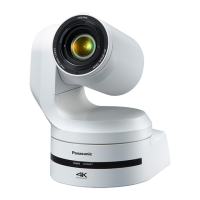

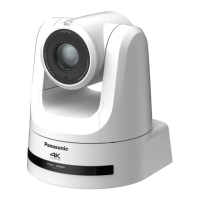
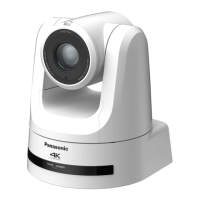
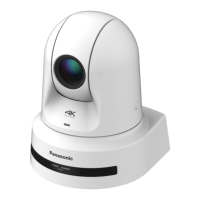

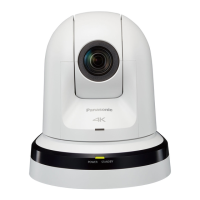
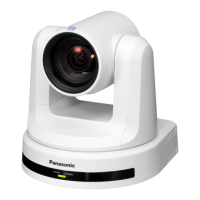
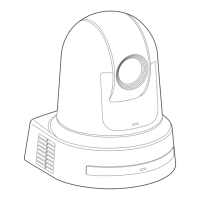
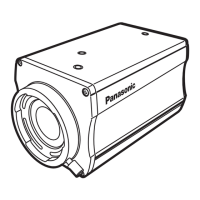
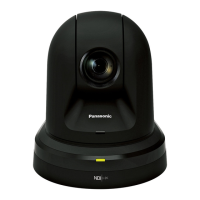
